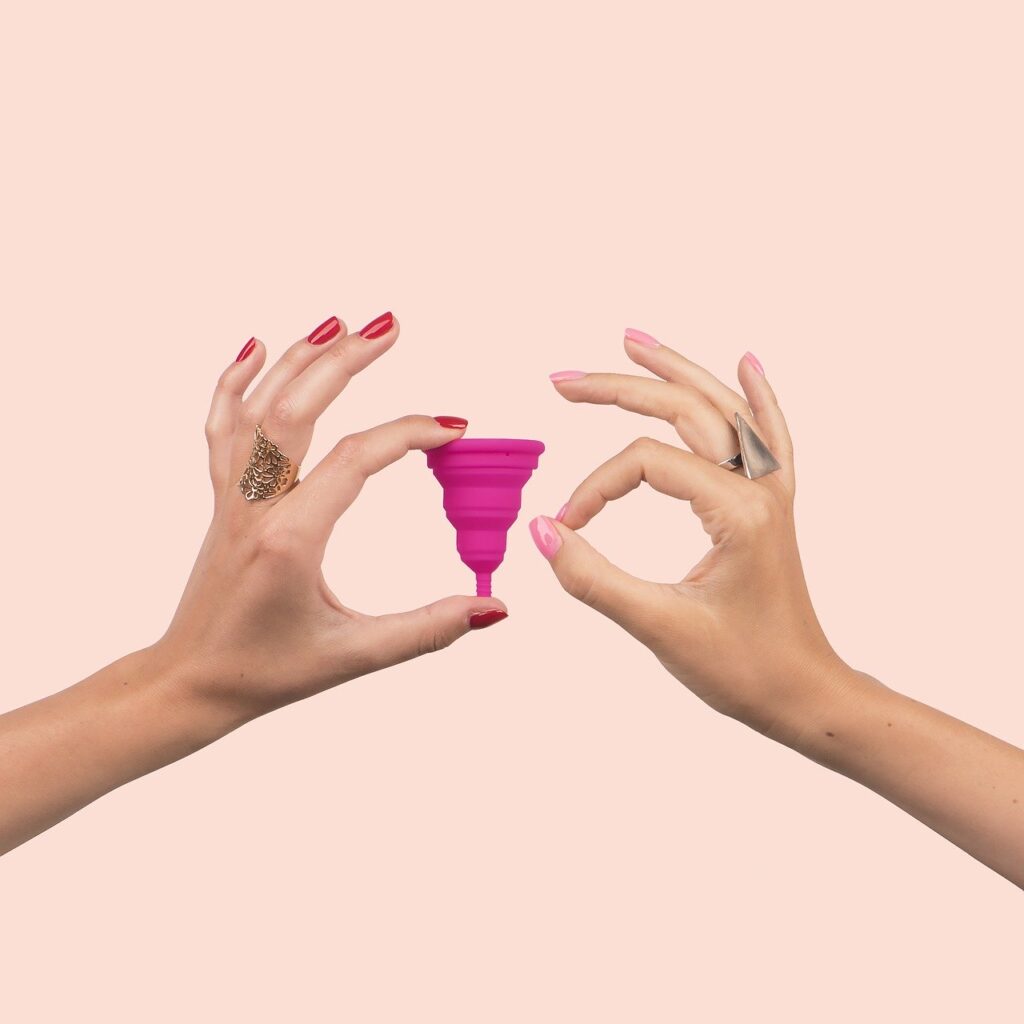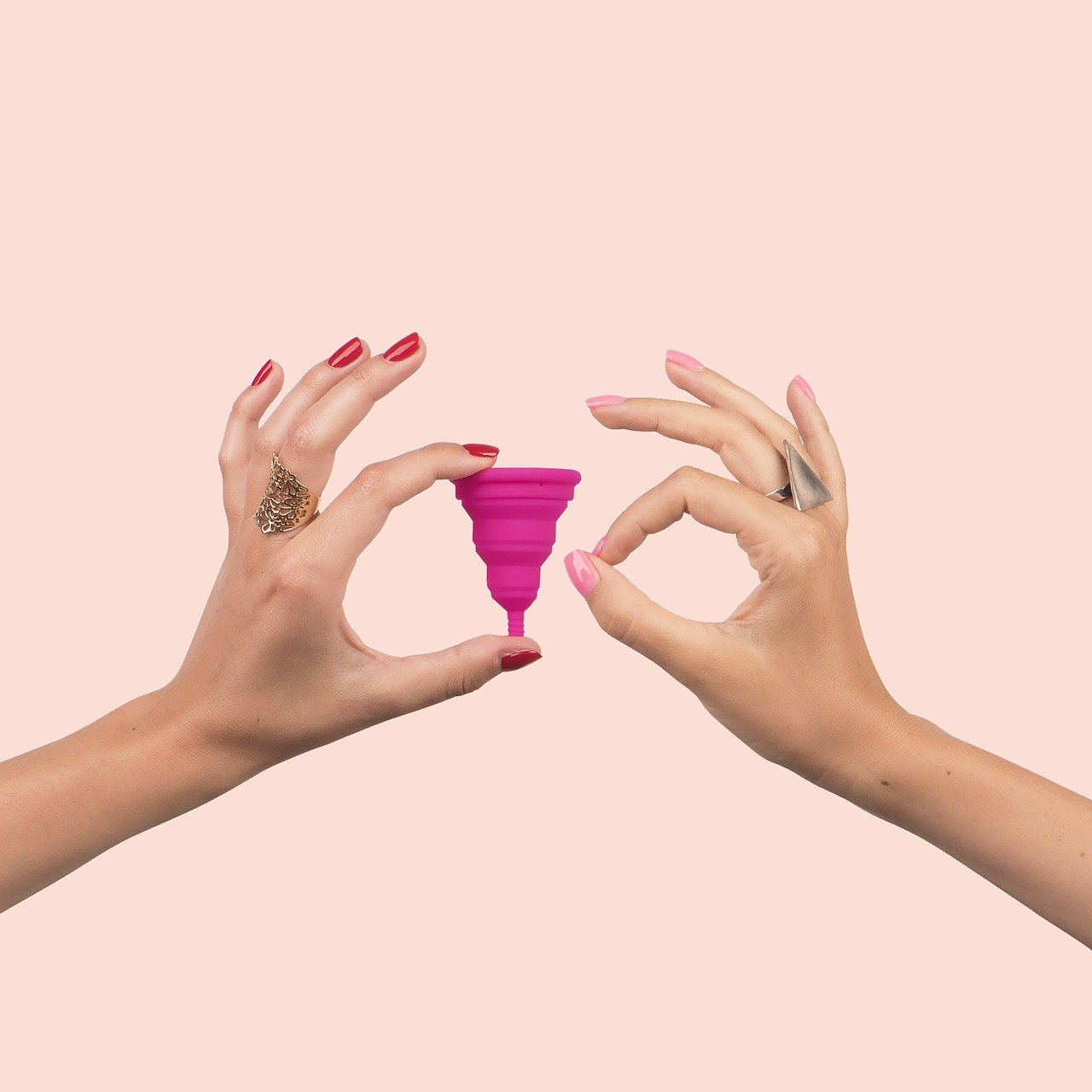I have been a menstrual cup user for almost two years and a half years. In October 2017, I was working on a project in Kinnaur, Himachal Pradesh, that provided menstrual workshops to adolescent girls in government schools throughout the district. My fellow facilitator happened to be a cup user, advocate, and maker. When she told me all about her glorious cup life, I instantly became a convert and continue to be surprised by how easy it has made my life. I have used cloth pads and hemp pads, but at the end of the day, they are pads. They are cumbersome – the wetness, changing, washing, wrapping and throwing away – and then there is the additional horror of seeing a dog walking around with one in its mouth. Well, that’s all gone with the magic cup coming into my life, though not the doggies bit and that still makes me sad.
Of course, the cup has a learning curve, but let’s be honest, so does a period. In fact, while I am well acquainted with my cup, my period can still be mystifying. I talk to a lot of women about the cup and my period post using the cup. I find that I bleed for fewer days and although my cramps can still reduce me to a ghoul-like state, now it’s for only half a day. I find it much easier to exercise on my period, and even have two friends who deep-sea dive using the cup. The reaction to my ‘Cup Talks’ varies, depending on whether the women have heard of it and how many times they have heard of it. If they have never seen a menstrual cup and aren’t too aware of their anatomy, they might be shy, shocked and even a bit afraid. If they have heard of it and know people who are using it, they will be more receptive and inquisitive. Though this isn’t always the case as I discovered when I was in Jharkhand conducting workshops with Aanganwaadi workers on education. I used my free breaks to talk to them about the cup, and to date, they have been my most inquisitive and witty audience. They asked all the right questions: about infections; how long can it stay inside; how often will they have to buy a new one, etc. My answers had them smiling in delight because with their long working hours, what I was describing sounded like a dream to them. As I write this, I am trying to raise money to go back there, give them a basic workshop and provide them with cups.
The cup is life-changing in a lot of ways: you spend less on sanitary products; you don’t have to worry about disposal or changing all the time, and you get better acquainted with your body. For one, women think they bleed much more than they actually do because it spreads all over a pad like a murder scene. Then, there is the horrible smell of blood being oxidized on a pad, which completely vanishes with the cup. These realisations will come to you at around your fourth month with the cup, as prior to that it can be a bit scary to insert and remove it.
Let me tell you about my first time, it was special. I lit a candle, burned some incense oil, boiled my cup, and poured myself a big ol’ glass of wine. After half a glass and roughly twelve minutes of boiling, I sat on my toilet. I folded the cup, made the bit that was going into me really tiny (I am sure it is different for everyone, but I find that after the initial insertion, I don’t really mind how wide it is, it just has to be really tiny at the start). Well anyway, I failed the first time because although I managed to kind of squeeze it in, I had the angle all wrong and it refused to go in. I realised that leaning forward was making it tiresome and uncomfortable. So, I leaned back (Fat Joe style), spread my legs a little more so that my hands had more room to maneuver (I’m sorry if this is a little too graphic for some of you because it’s about to get worse), and tried again. This time I got it halfway up, but before I could push it into its rightful place, it popped. And that’s when I learned another valuable lesson, the tight grip. With two lessons and zero injuries encouraging me to persevere, I leaned back, spread my legs, gripped my cup tighter and inserted it again, and this time it slid in. I put my finger in to check if I could feel it, and I could. Finally, I had powered through and launched the cup inside my vagina after what had felt like an hour but was really only eighteen minutes. Poof, it was like I had no period at all! It is indescribable to anyone who hasn’t used one and having been that person for a long time, I feel for the non-user. So, let me welcome you to the other side. The cup, unlike a pad, collects blood and this collection happens way inside your body, so you’re pretty unaware. Unlike tampons, the cup doesn’t need to be removed every four hours and can remain inside you for up to twelve hours.
Now, for the less glamorous bits. The next morning after a very relaxing sleep, I woke up to the feeling of no wetness, no urgency to change my pad and strangely no cramps. At first, I couldn’t feel the cup anywhere, so of course, I started to panic and started poking around but my finger could not find it. I made myself calm down, sat on the toilet and quite like what I had seen in scenes about childbirth, I pushed and every time I pushed, it came further down. Then I made a grip around it and pulled it out, quite clumsily I might add as the blood was everywhere! I cleaned the cup and put it back inside. The second time around all of it was much easier and I couldn’t understand why the first time had been such a mess.
My main attraction to the cup was sustainability. Pads are primarily plastic and very absorbent. If thrown in water bodies, they not only pollute them but also soak up water. The disposal of pads is a truly worrisome task as they are either burnt, buried into landfills or thrown into rivers. I was, of course, skeptical about inserting something into my body for hours on end, but I wanted to switch to a more sustainable and less icky way of menstruating. Last year, a study by Penelope Phillips-Howard revealed that 1.9 billion women globally are of menstruating age and spend 65 days a year on an average dealing with menstrual blood flow. The study was done to find out the effectiveness and safety of using menstrual cups, and it was seen that over 70% of women who use menstrual cups would continue to use them, and they are as safe as any other menstrual products available.
This write-up is less about converting anyone and more about putting out more information out there, not just about the product but about the experience too. The menstrual cup, if made accessible, will be very helpful to women of all ages and demographics. Therefore, it is essential for more women to speak about sustainable periods and how empowering they can be.

Share
Image by PatriciaMoraleda from Pixabay


Well written ,very informative…
I have just finished your article,must appreciate, very clearly written informative and also thought-provoking .
Very well written article, makes sense and elucidates with so much clarity. Many times we don’t try something different for lack of understanding….this should bring clarity to a lot of people with questions.